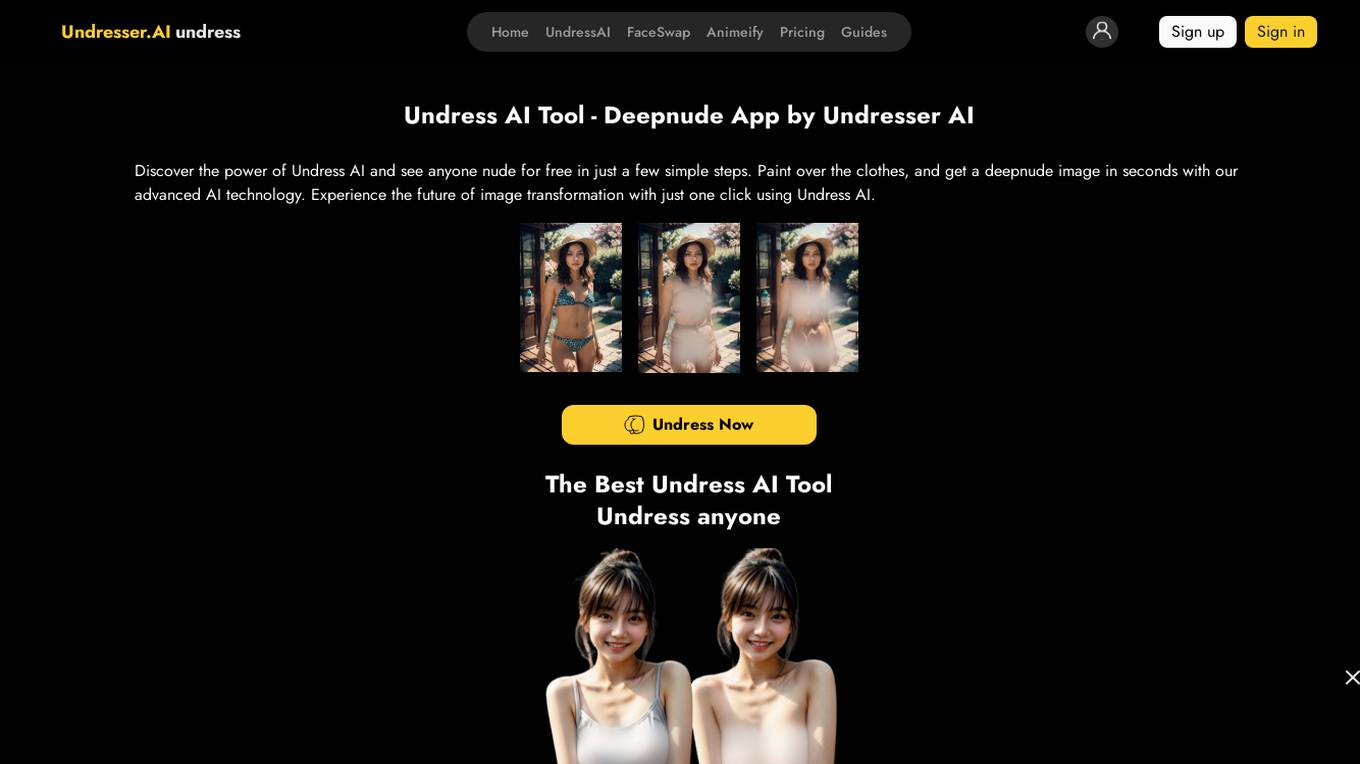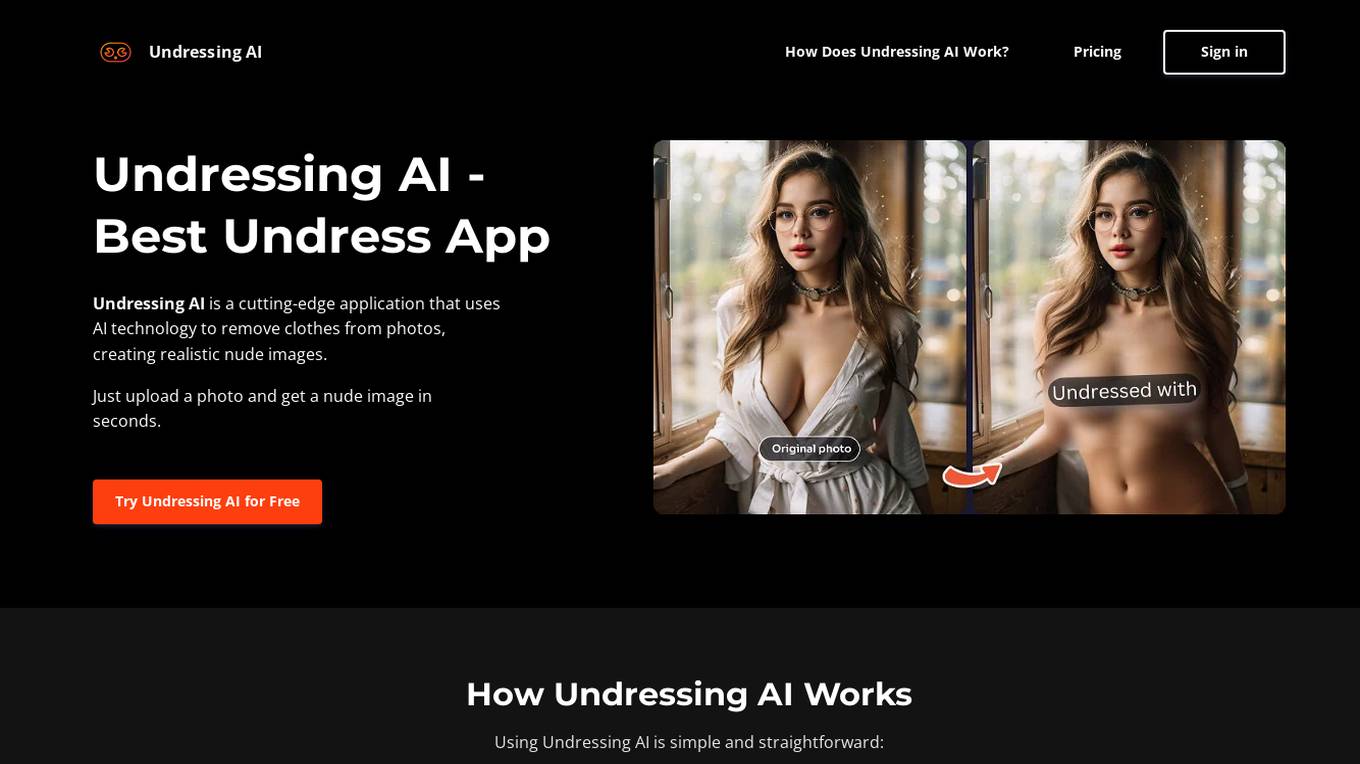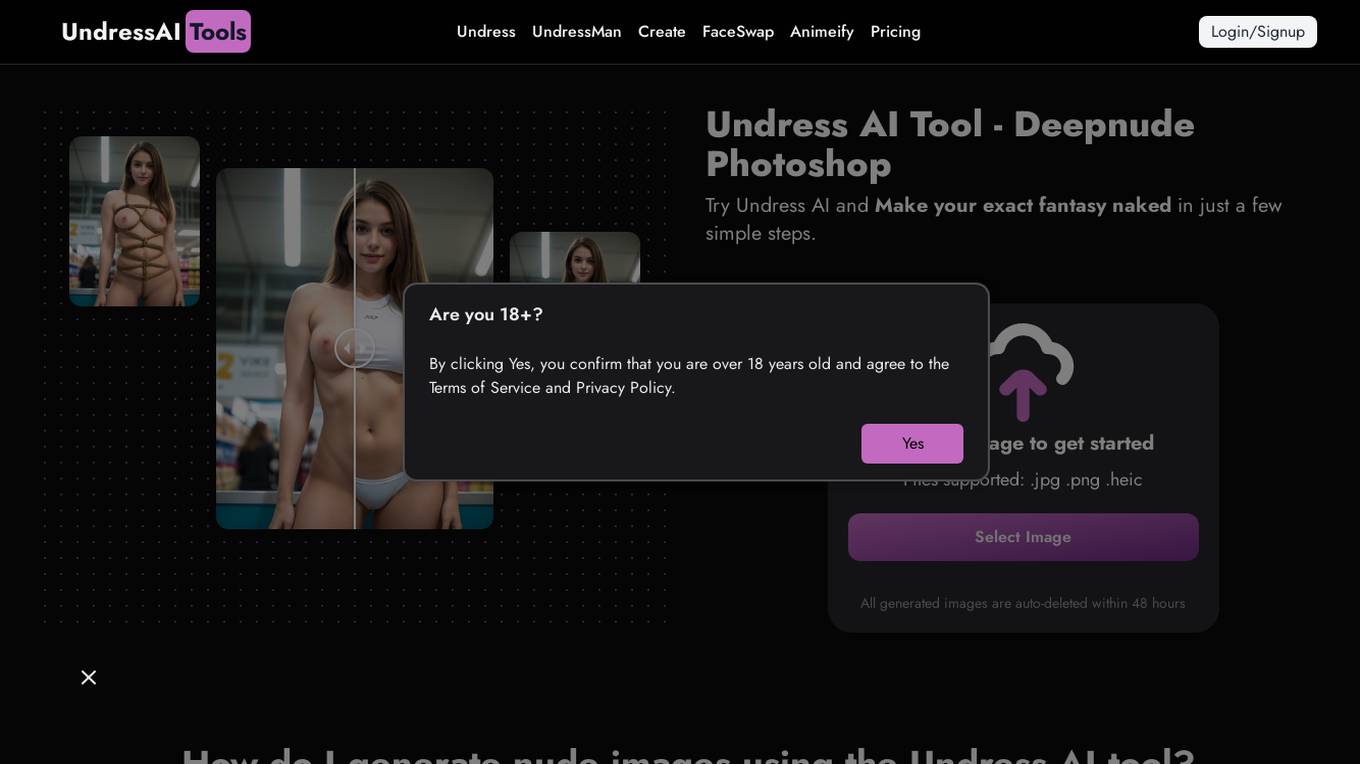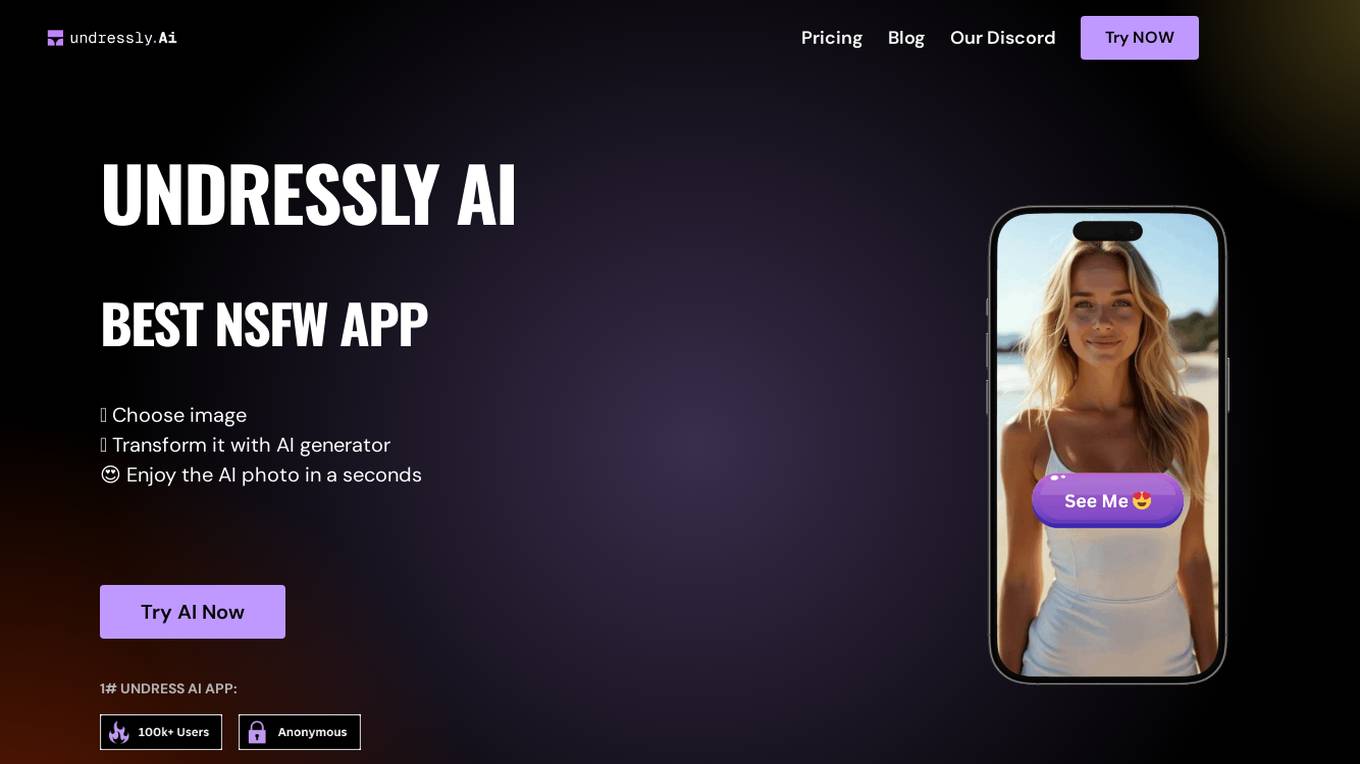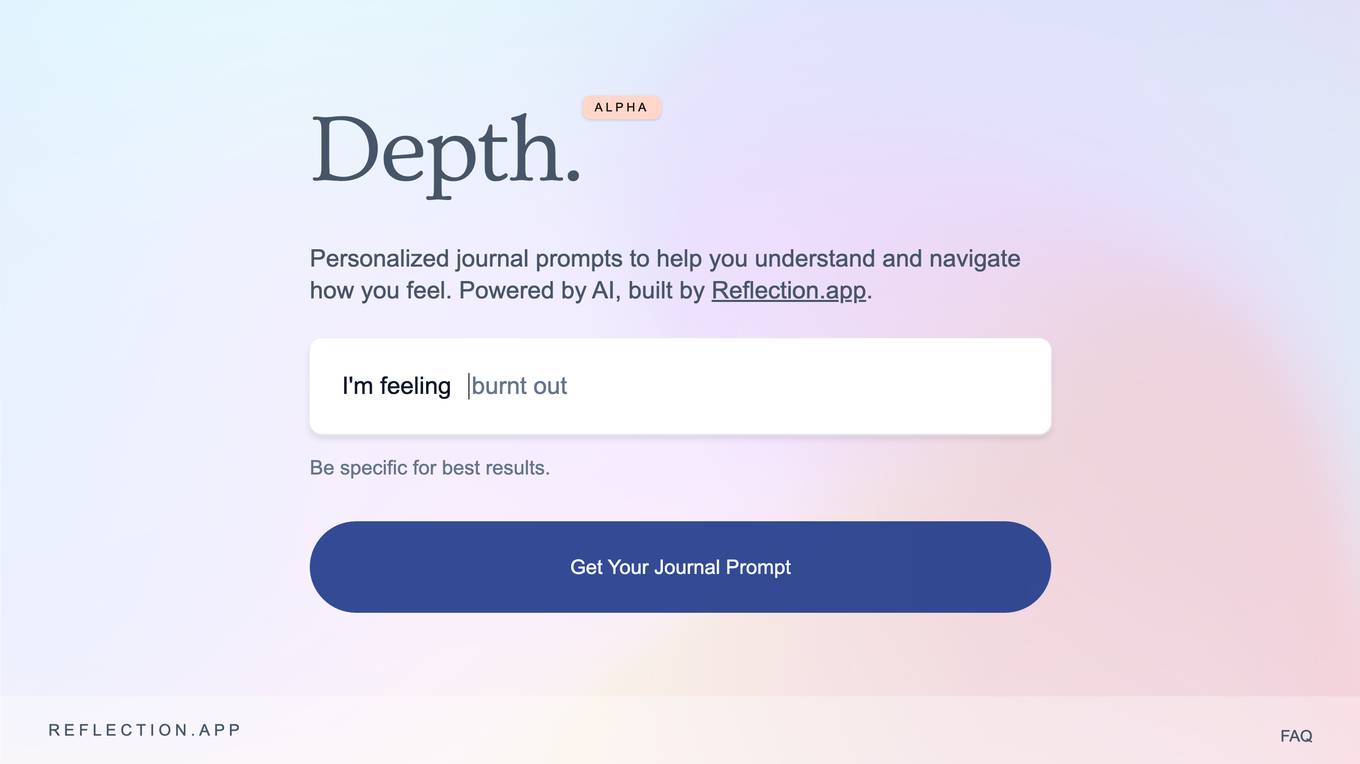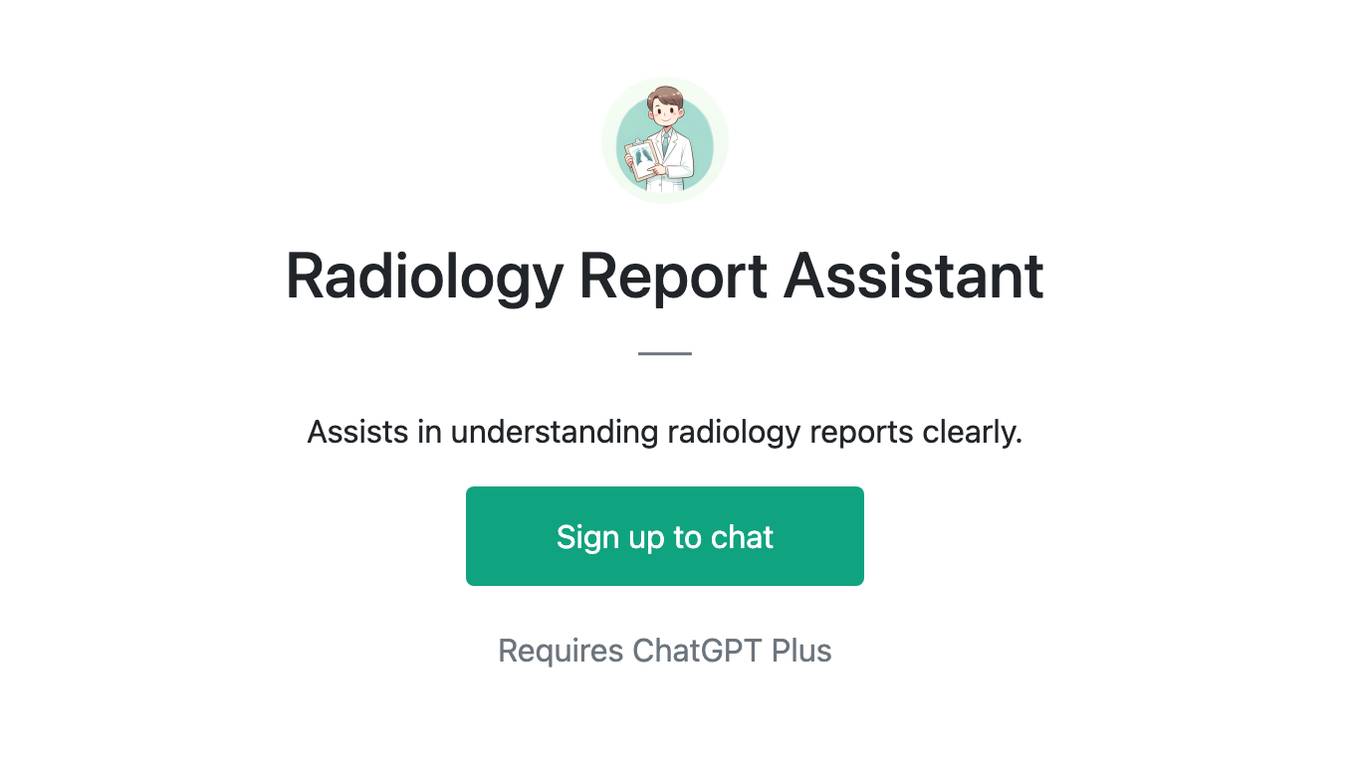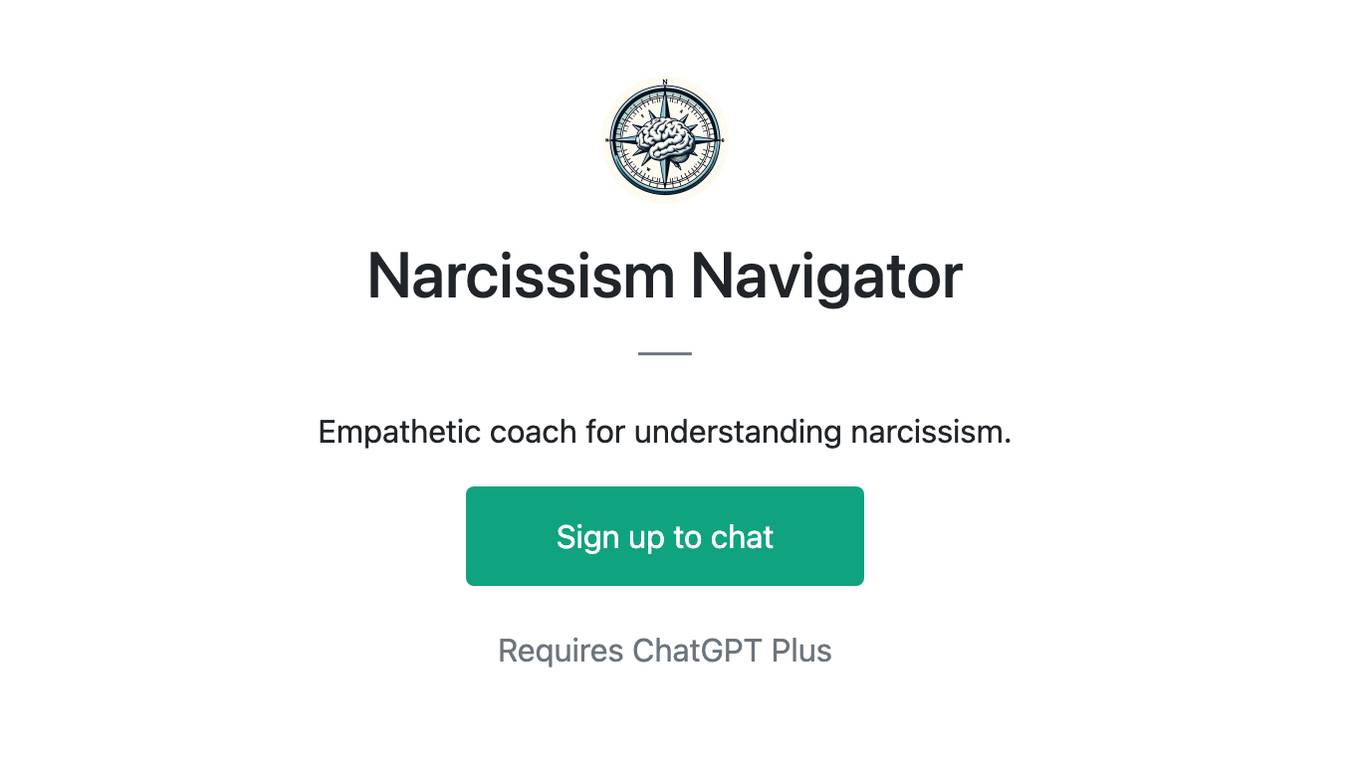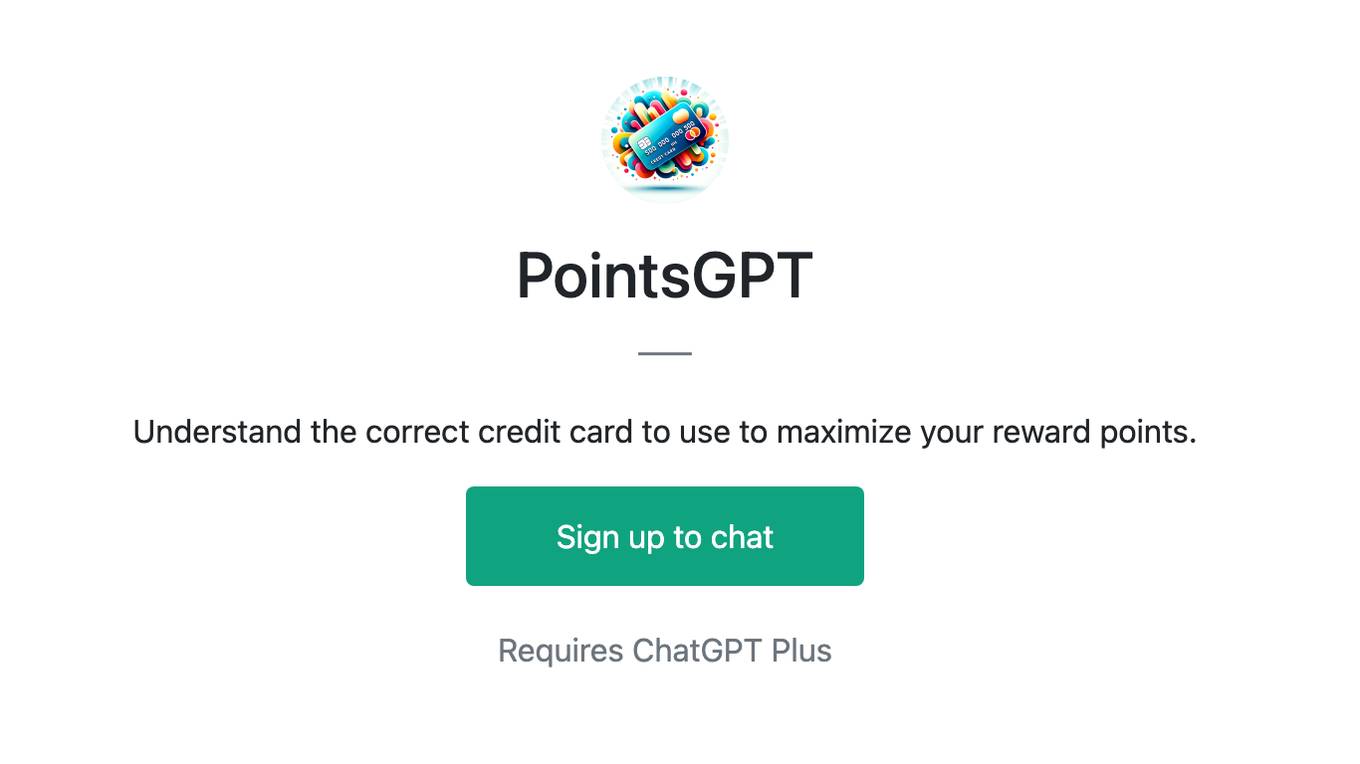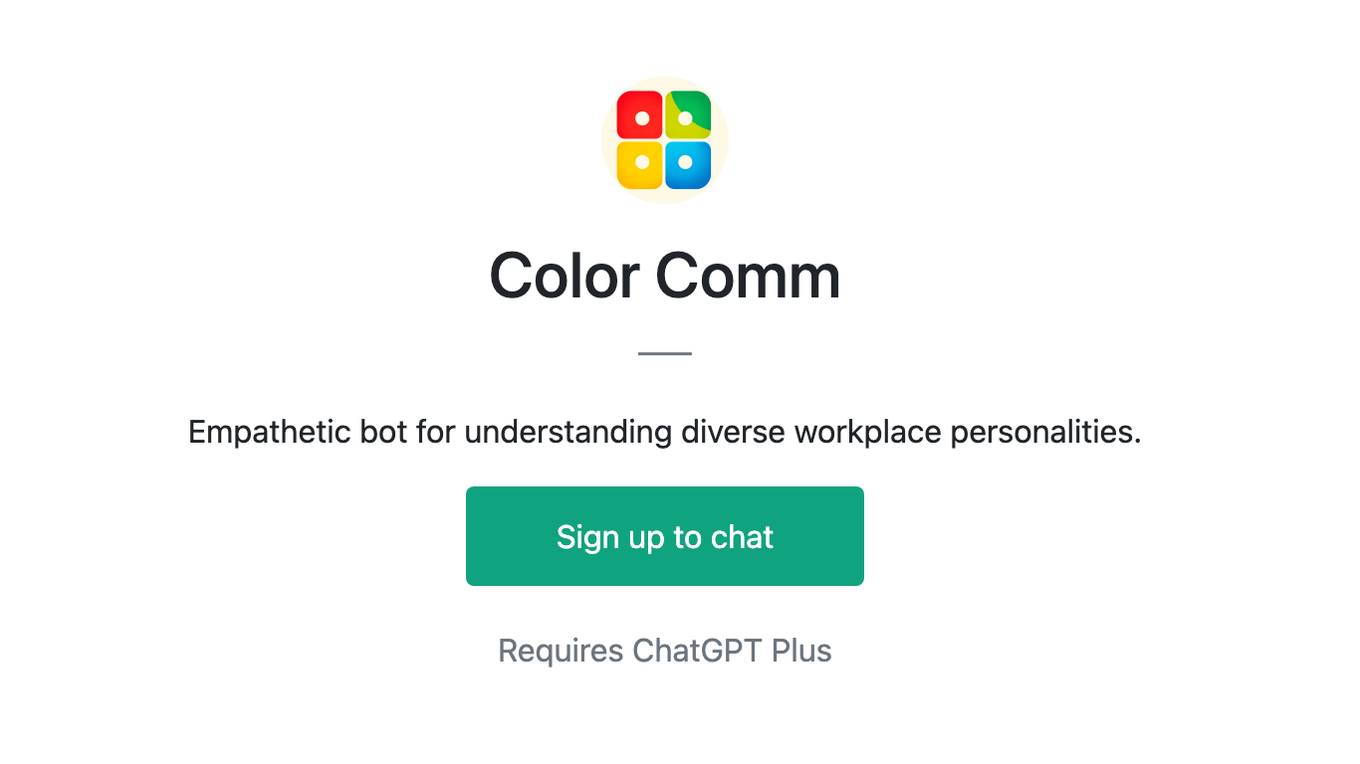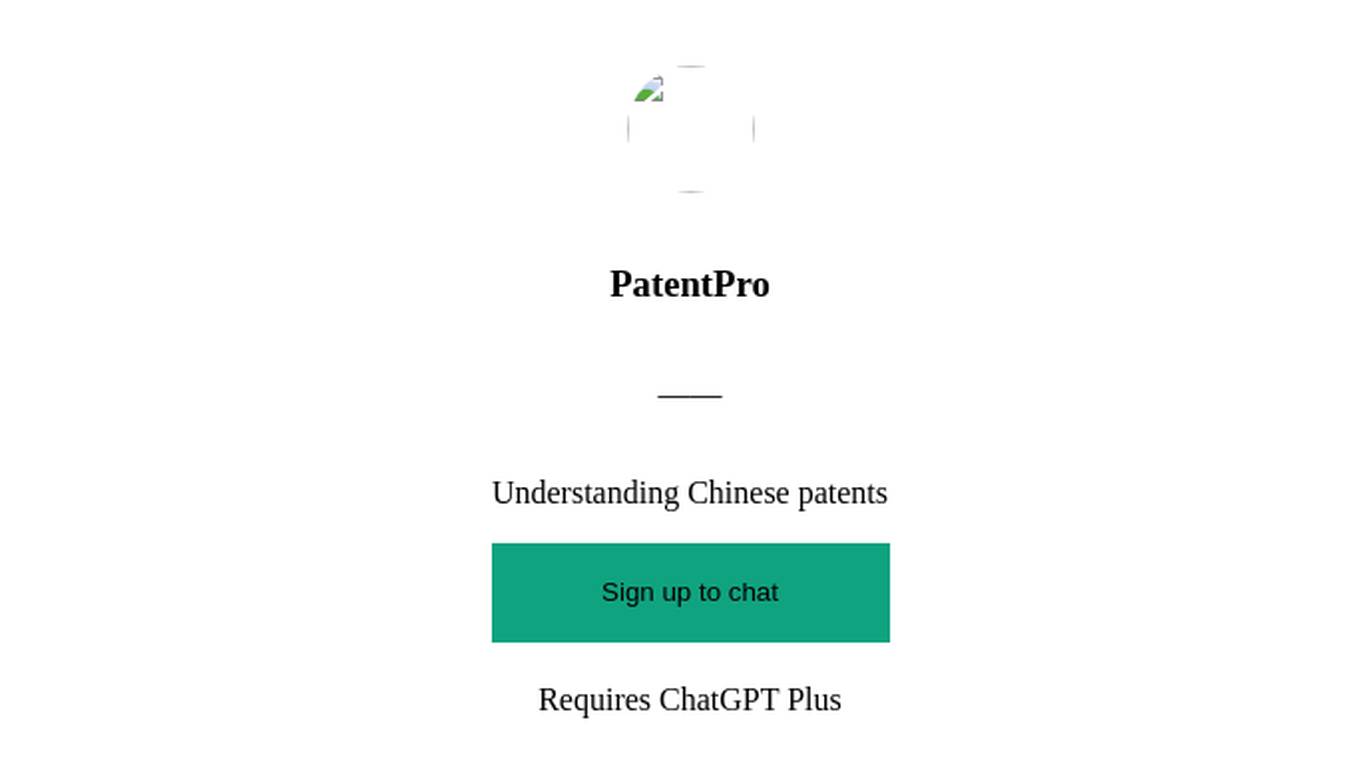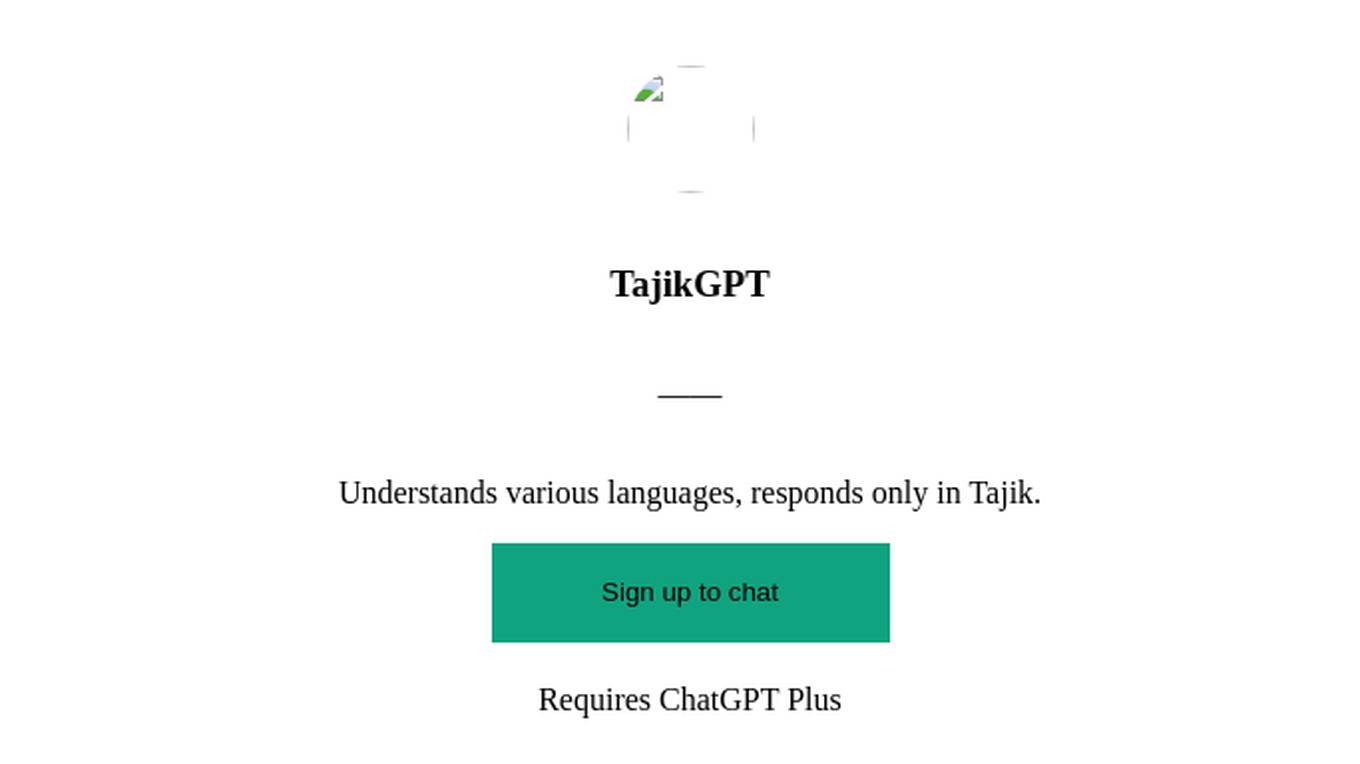AI tools for underss
Related Tools:

Undress Photo AI
Undress Photo AI is a free online tool that uses artificial intelligence to generate nude and bikini images from photos. The tool is easy to use and requires no registration. Simply upload a photo and the tool will generate a nude or bikini image in seconds. The tool can be used to create realistic and high-quality nude and bikini images for a variety of purposes, such as art, fashion, and advertising.
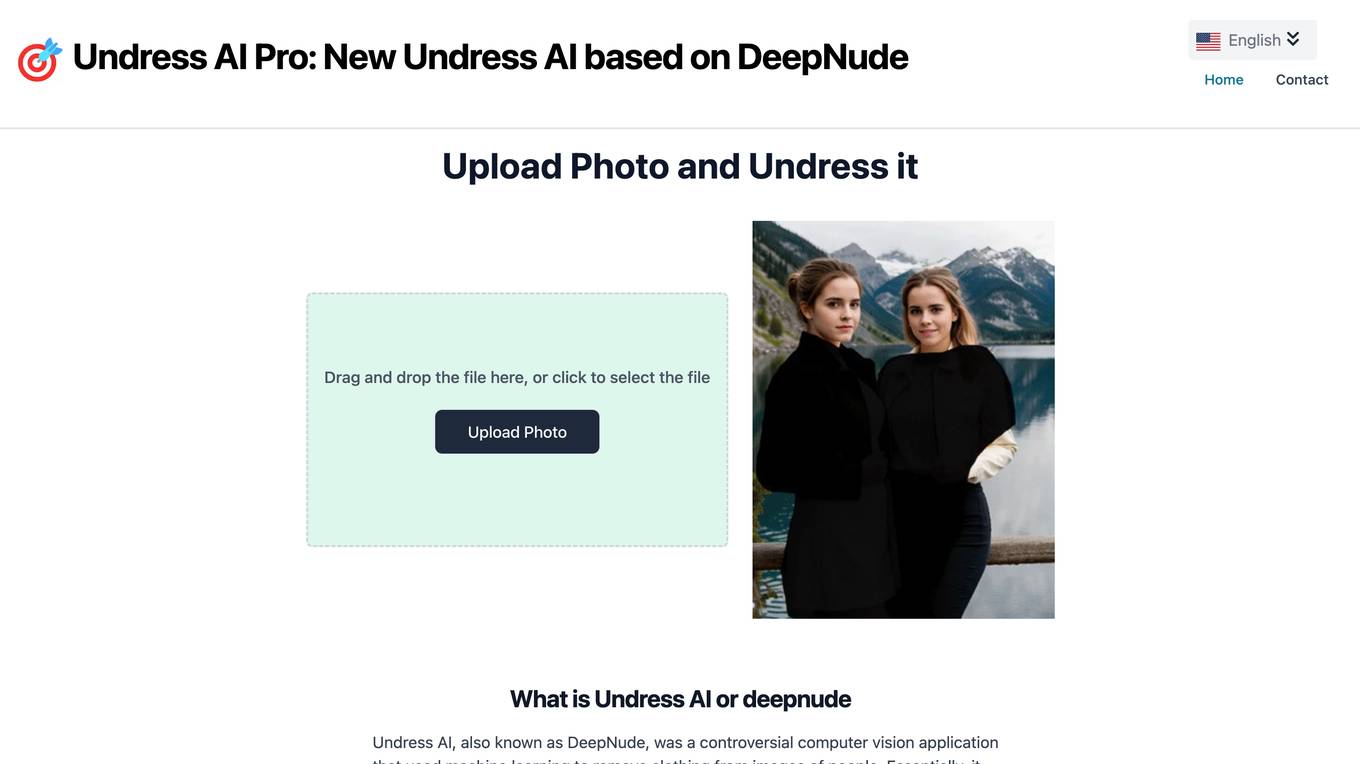
Undress AI Pro
Undress AI Pro is a controversial computer vision application that uses machine learning to remove clothing from images of people. It was based on deep learning and generative adversarial networks (GANs). The technology powering Undress AI and DeepNude was based on deep learning and generative adversarial networks (GANs). GANs involve two neural networks competing against each other - a generator creates synthetic images trying to mimic the training data, while a discriminator tries to distinguish the real images from the generated ones. Through this adversarial process, the generator learns to produce increasingly realistic outputs. For Undress AI, the GAN was trained on a dataset of nude and clothed images, allowing it to "unclothe" people in new images by generating the nudity.

Undress AI
Undress AI is a free online tool that allows users to create deepnude images. Deepnude images are realistic, nude images of people that are generated using artificial intelligence. The tool is easy to use and does not require any special skills or knowledge. Simply upload an image of a person and the tool will generate a deepnude image of that person.
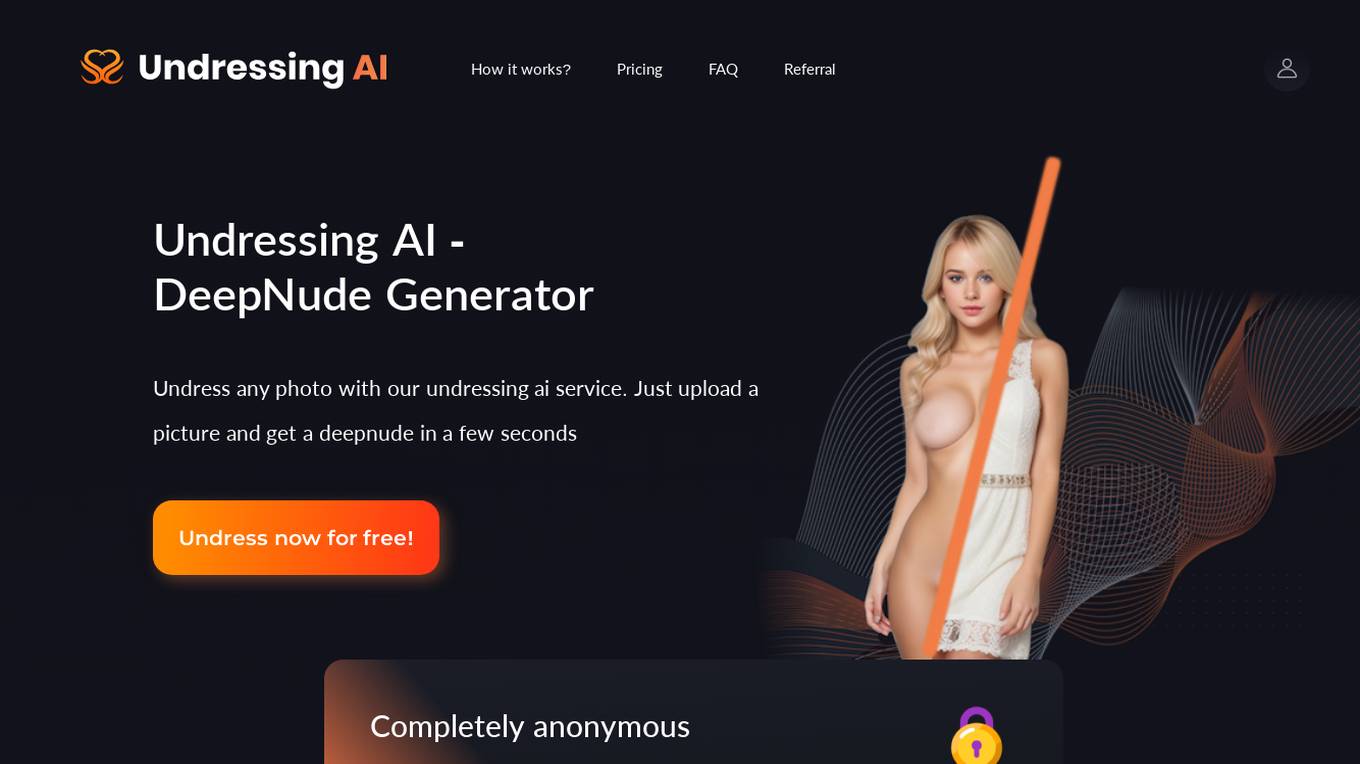
Undressing AI
Undressing AI is a website that provides information about artificial intelligence (AI) and its potential impact on society. The site includes articles, videos, and other resources on topics such as the history of AI, the different types of AI, and the ethical implications of AI.
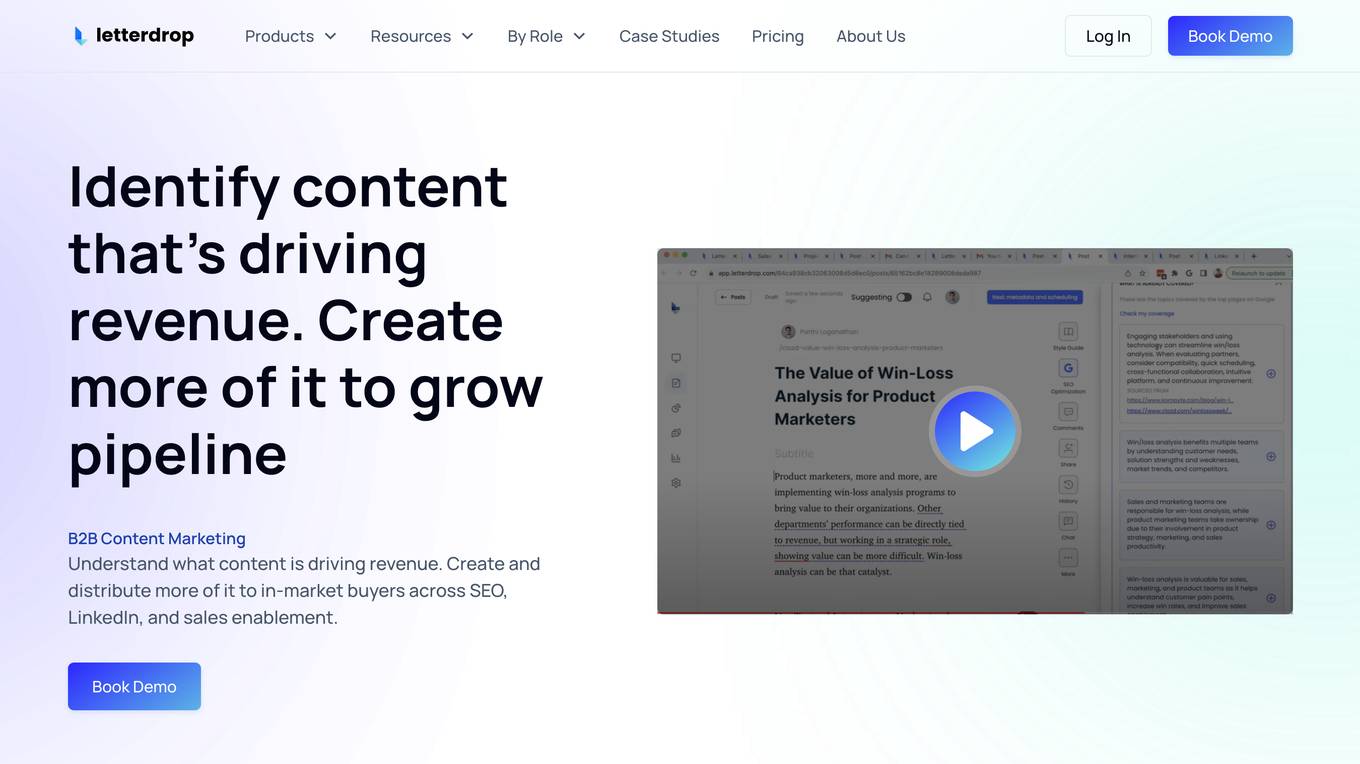
Letterdrop
Letterdrop is an AI-powered application designed to help businesses attract warm leads and increase their pipeline. It offers features such as uncovering contact-level leads, creating thought leadership content, and nurturing leads with turn-key content. Letterdrop aims to help users book more meetings, close deals faster, and improve their outbound messaging strategies. The application leverages AI to filter out irrelevant leads, identify warm leads, and provide context on why they were surfaced. With a focus on personalized outreach and nurturing, Letterdrop helps users engage with hot leads effectively.

DDoS-Guard
DDoS-Guard is a web security service that protects websites from distributed denial-of-service (DDoS) attacks. It checks the user's browser before granting access to the website, ensuring a secure browsing experience. The service provides automatic protection against DDoS attacks and ensures the smooth functioning of websites. DDoS-Guard is trusted by many websites to safeguard their online presence and maintain uninterrupted service for their users.
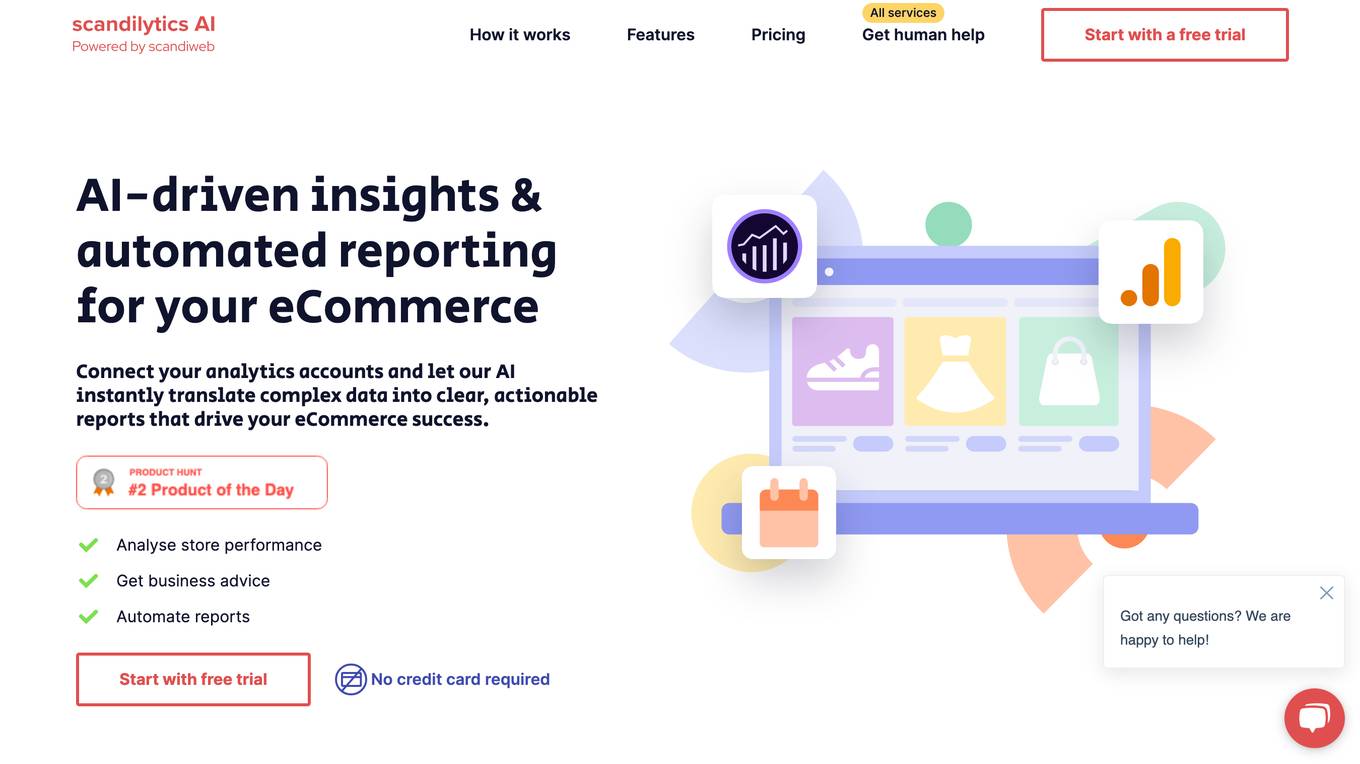
Scandilytics AI
Scandilytics AI is an AI-driven platform that provides data analytics and automated reporting services for eCommerce businesses. By connecting with your analytics accounts, the AI translates complex data into clear, actionable reports to drive success. The platform offers three main AI solutions - Data Analyst AI, Business Analyst AI, and Marketing Agent AI - each designed to analyze data, provide insights, and optimize business strategies. Scandilytics AI empowers global brands by offering smarter analytics at a lower cost, saving time, and delivering clear insights of eCommerce performance 10X faster. The platform ensures data security compliance and helps businesses optimize KPIs, understand customer behavior, and improve marketing strategies.

Legalese Decoder
Legalese Decoder is a web application that utilizes AI, natural language processing (NLP), and machine learning (ML) to analyze legal documents and provide a plain language version of the document. It is designed to simplify legal jargon and complex terms in contracts, agreements, and other legal documents, making it easier for users to understand and interpret them. The application aims to empower individuals, small business owners, and professionals by offering a free tool to navigate legal complexities with ease.
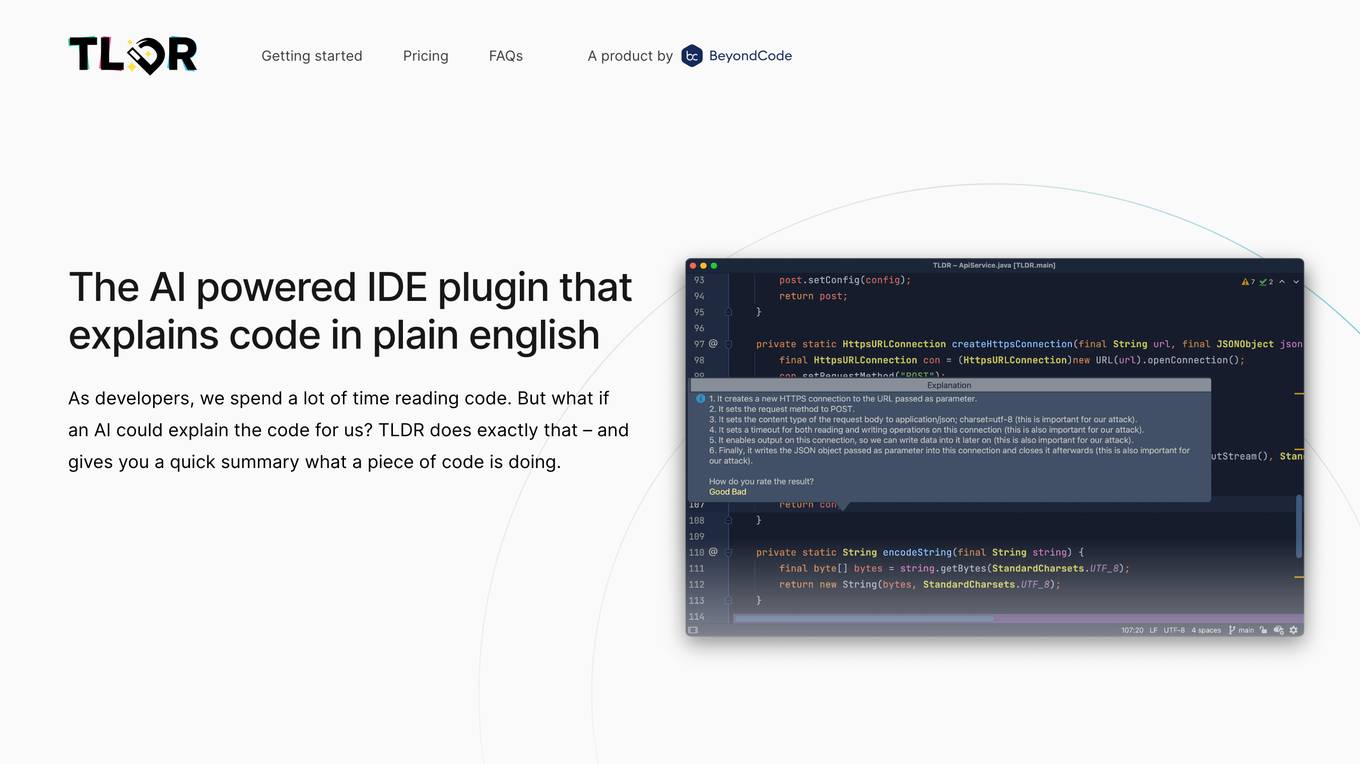
TLDR
TLDR is an AI-powered IDE plugin that explains code in plain English. It helps developers understand code by providing quick summaries of what a piece of code is doing. The tool supports almost all programming languages and offers a free version for users to try before purchasing. TLDR aims to simplify the understanding of complex code structures and save developers time in comprehending codebases.
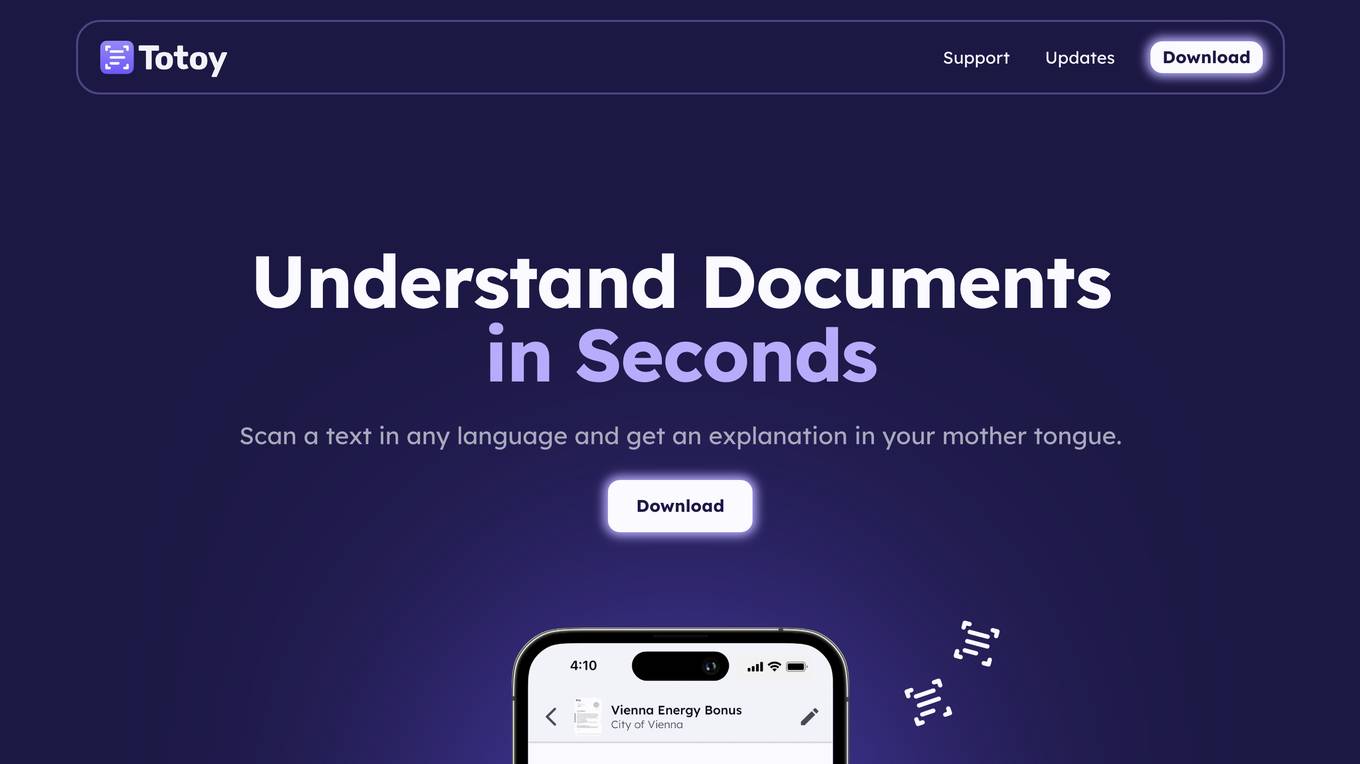
Totoy
Totoy is a Document AI tool that redefines the way documents are processed. Its API allows users to explain, classify, and create knowledge bases from documents without the need for training. The tool supports 19 languages and works with plain text, images, and PDFs. Totoy is ideal for automating workflows, complying with accessibility laws, and creating custom AI assistants for employees or customers.

Re-View
Re-View is an AI-powered platform that enables users to conduct surveys that capture more than words by utilizing user-friendly video survey forms. The platform allows users to understand emotions, uncover insights, and collect more and better data through authentic emotional connections. With features like automatic insights, efficient research at scale, stunning simplicity, and powerful research capabilities, Re-View offers a practical pricing model that makes research accessible to all. Users can easily create surveys, analyze responses with AI assistance, and gain valuable research reports to support decision-making.
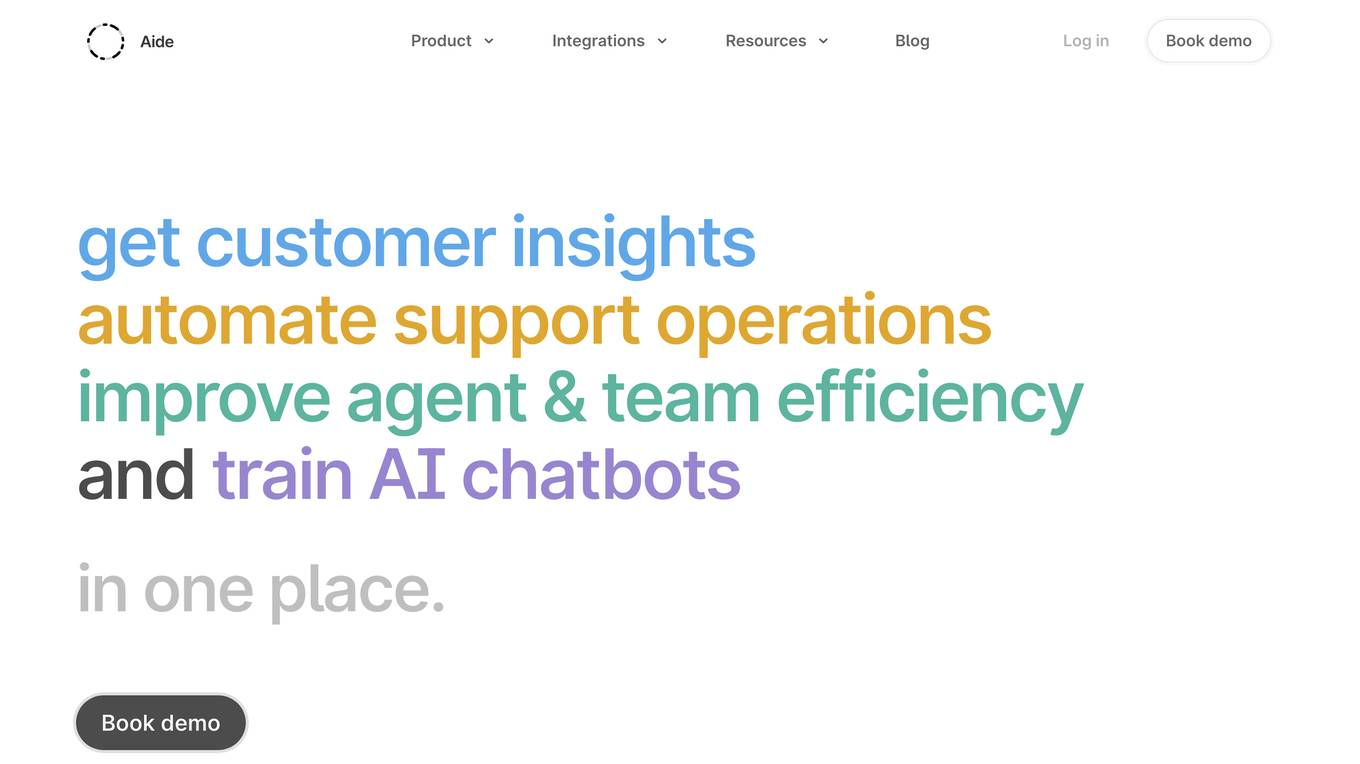
Aide
Aide is an AI platform designed to enhance customer support operations. It offers a range of features to help businesses gain insights into customer needs, automate support processes, improve agent efficiency, and train AI chatbots. Aide's key capabilities include customer insights, workflow automation, agent assist, and AI chatbots. With Aide, businesses can analyze customer conversations, identify pain points, and automate repetitive tasks to streamline support operations and improve customer satisfaction.
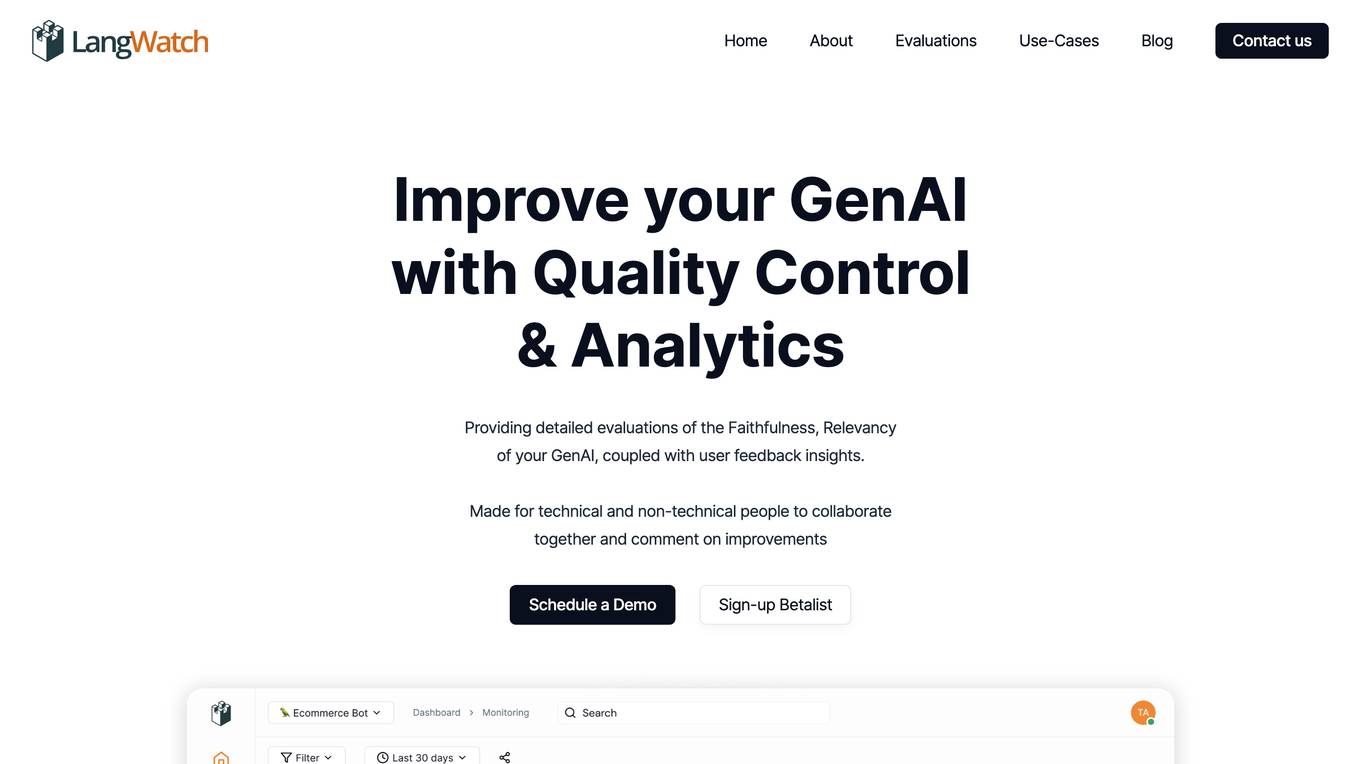
LangWatch
LangWatch is a monitoring and analytics tool for Generative AI (GenAI) solutions. It provides detailed evaluations of the faithfulness and relevancy of GenAI responses, coupled with user feedback insights. LangWatch is designed for both technical and non-technical users to collaborate and comment on improvements. With LangWatch, you can understand your users, detect issues, and improve your GenAI products.
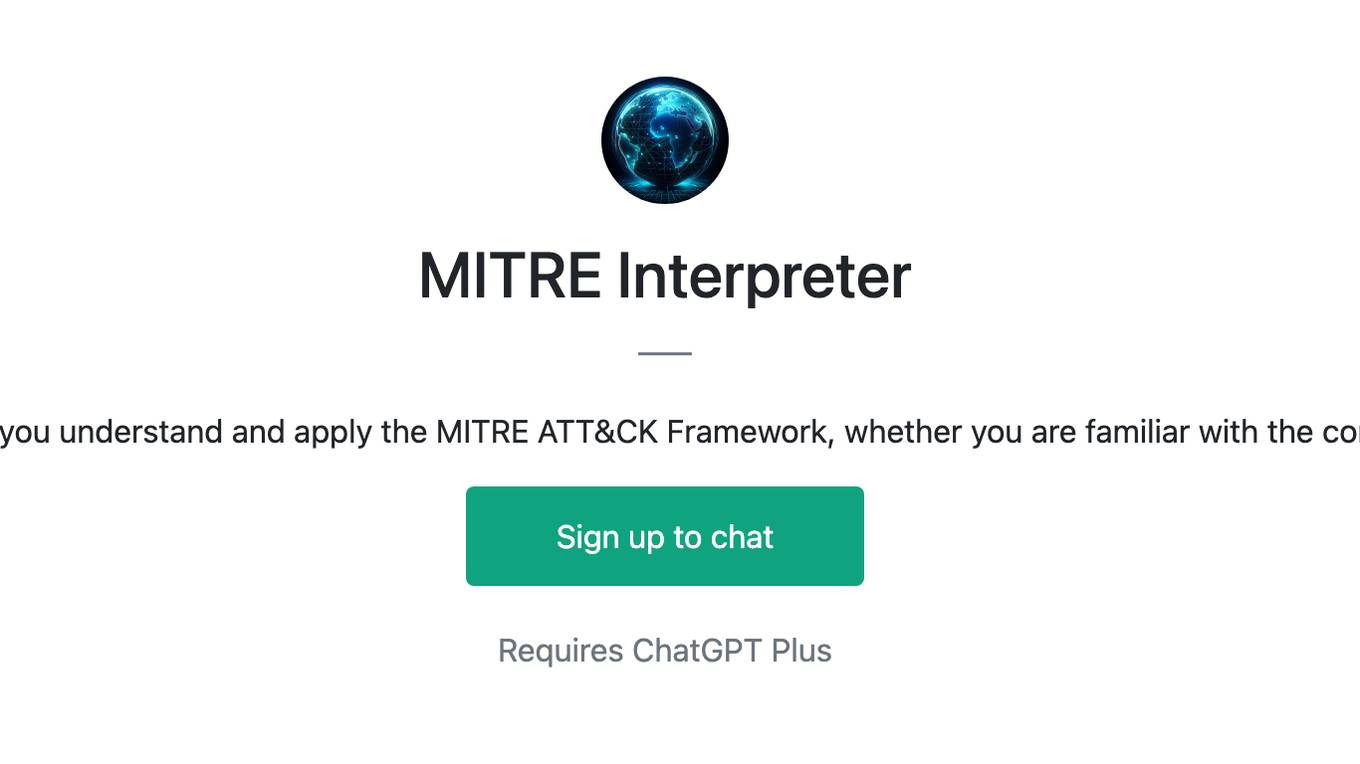
MITRE Interpreter
This GPT helps you understand and apply the MITRE ATT&CK Framework, whether you are familiar with the concepts or not.
Concept Explainer
A facilitator for understanding concepts using a simplified Concept Attainment Method.
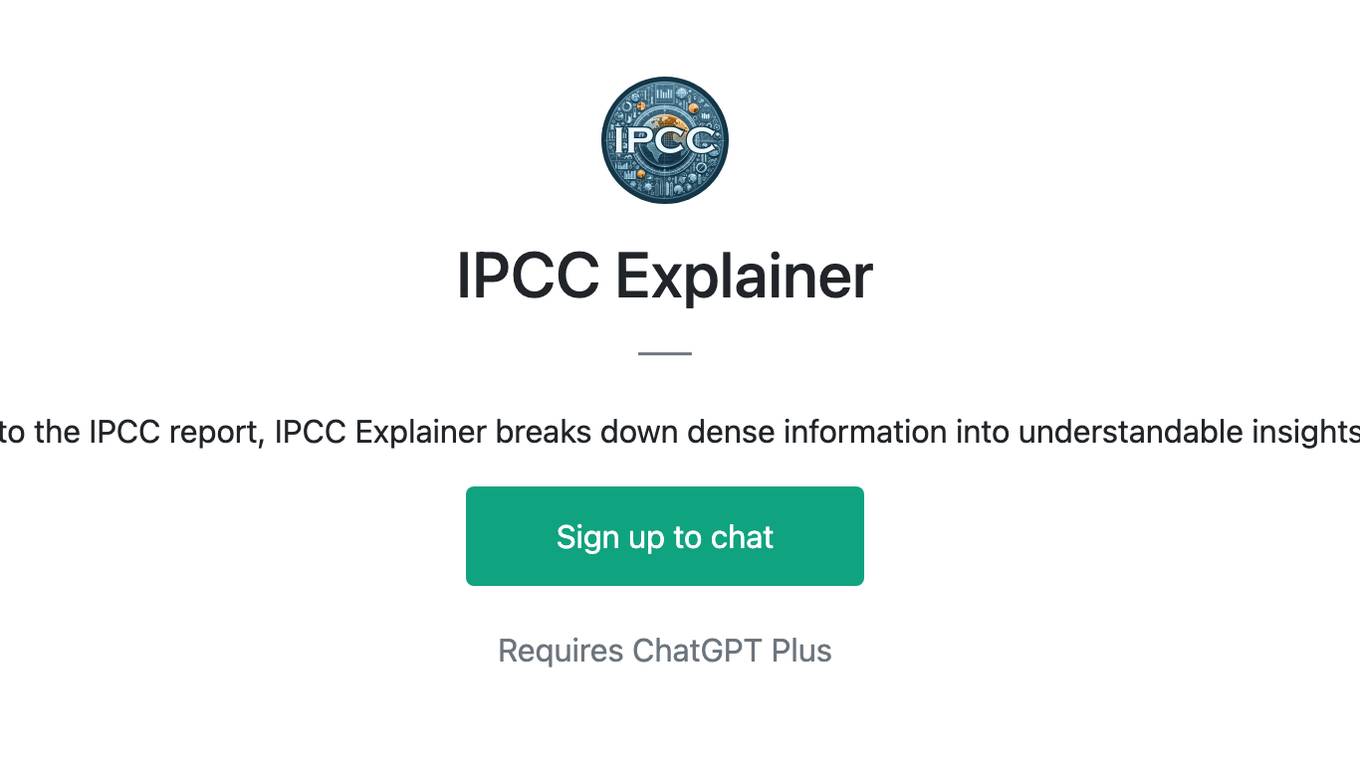
IPCC Explainer
A conversational guide to the IPCC report, IPCC Explainer breaks down dense information into understandable insights for public awareness
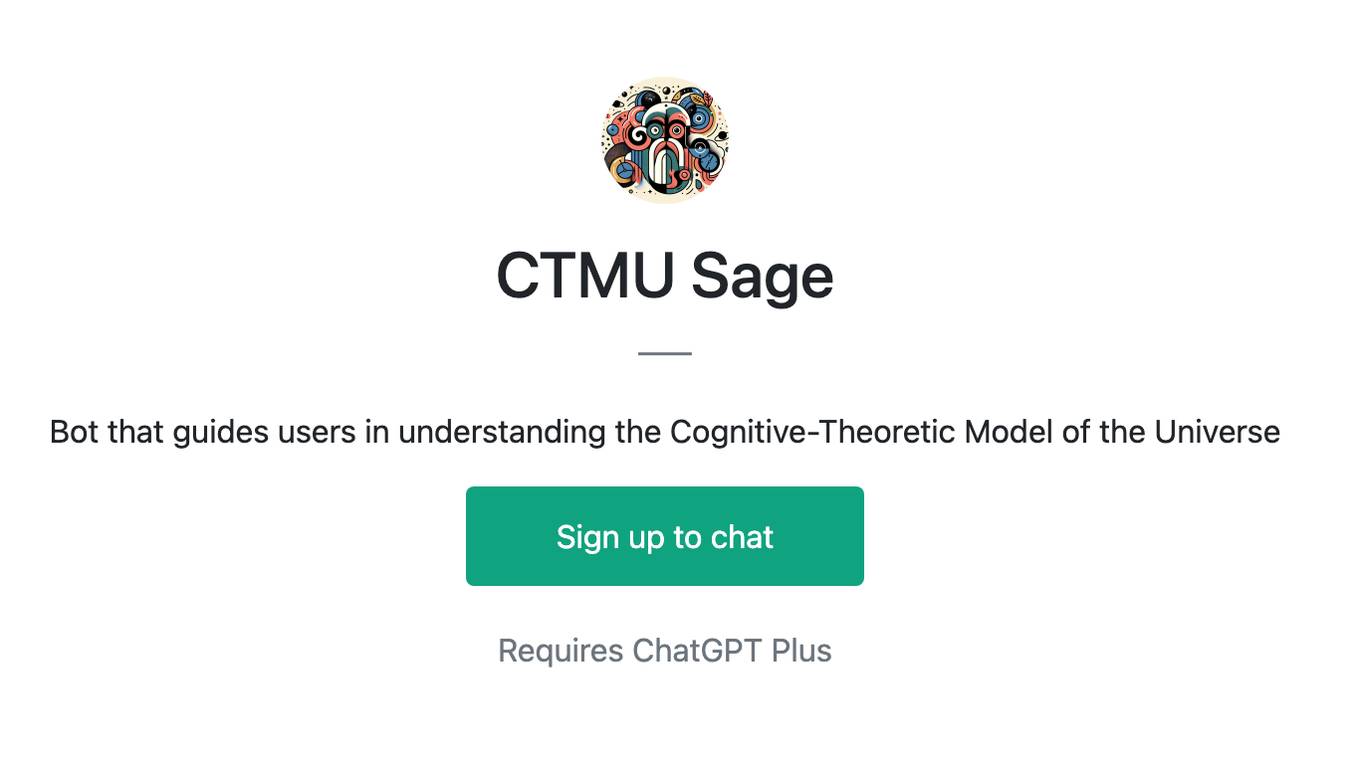
CTMU Sage
Bot that guides users in understanding the Cognitive-Theoretic Model of the Universe
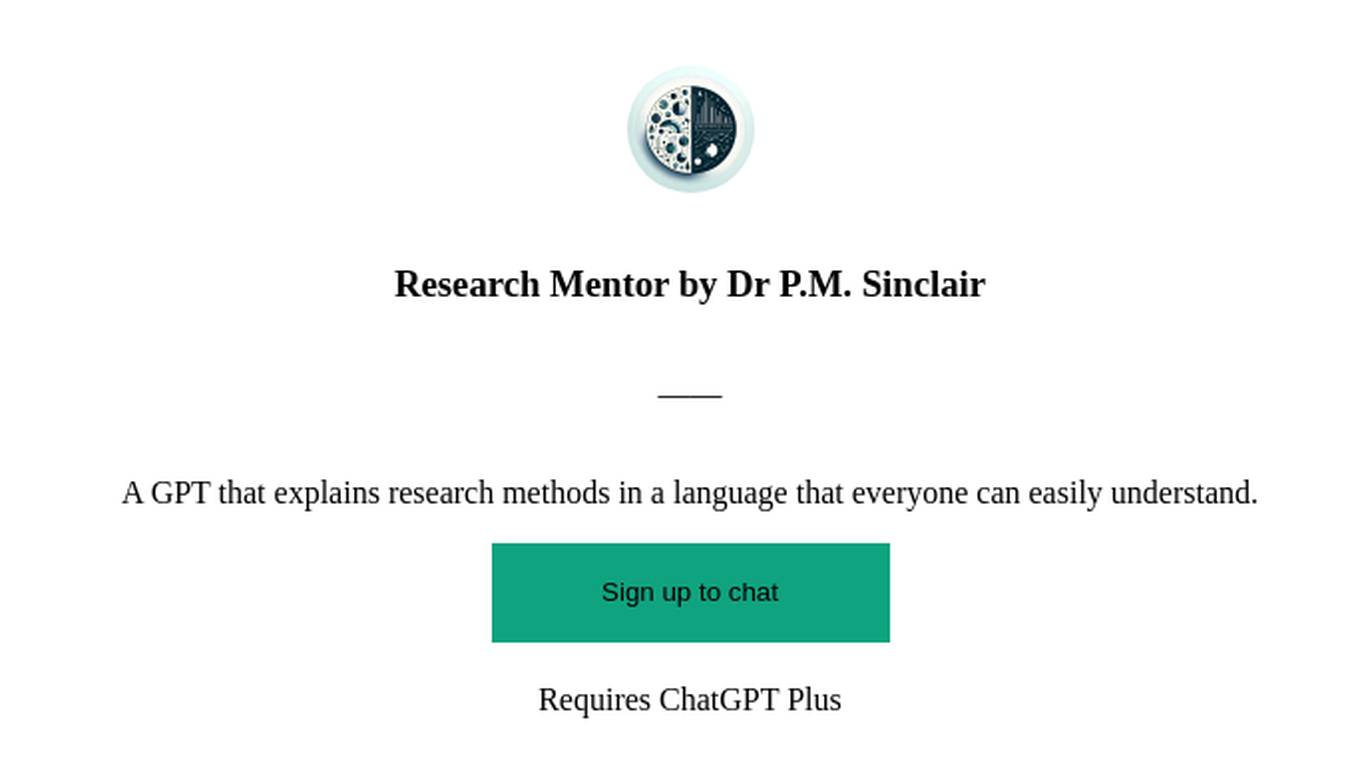
Research Mentor by Dr P.M. Sinclair
A GPT that explains research methods in a language that everyone can easily understand.


